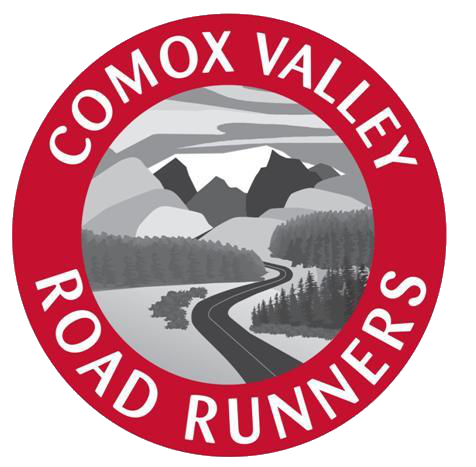Pool Running is back!
The CVRR is pleased to announce that Pool Running returns for another season of fun, frolics, hot tubbing, socializing, and ever-popular HARD WORK! New poolsters are welcome – no previous experience is required!
When is it?
We meet Wednesdays from 7:00 – 8:00 pm from mid-October to mid-December, then January to mid-March. Sessions are noted on the CVRR.ca calendar.
Where is it?
Comox Valley Sports Centre, 3001 Vanier Drive, Courtenay
How much is it?
Free with your CVRR membership!
What is it?
A chance to concentrate on running technique, and get a good aerobic workout, without the stress of gravity! Arrive early to get your running “float” on and be ready to warm up at 7:00 pm. We’ll spend about 10 minutes warming up in the water, followed by a 35-ish minute “interval” workout with alternating hard and easy pool running, then a 5 minute cool down and/or dynamic stretching to finish. The hot tub is available before and after the workout for relaxation and socializing.
For more information
Contact Roz at [email protected]
Upcoming events
PAYMENT
New this year! We are now collecting payment of $5 per session through Race Roster.
You can purchase sessions in groups of 5 ($25) or 10 ($50).
When you arrive at the pool, make sure you check in each time.
Remember that as a CVRR member, you get one free session. Pool Running sessions are for club members only.
We have the pool booked every Wednesday until March 18, 2019.
We take a Christmas break on Dec. 25 and January 1, starting back up on Jan. 08, 2020. Pool Running days are noted on the CVRR.ca calendar. Purchase your sessions HERE.
Where is it?
Comox Valley Aquatic Centre (Adjacent to North Island College).
How much is it?
$5 per session and CVRR membership required (see membership page or you can register as a member when purchasing your Pool Running sessions).
What is it?
A chance to concentrate on running technique, and get a good aerobic workout, without the stress of gravity. We generally spend about 10 minutes doing a warm up in the water, then do a 30-40-ish minute “interval” workout with alternate hard and easy “running”, followed by a 10 minute cool down or some bouncing exercises in the pool to finish. The hot tub is also available before and after the workout for relaxation and/or socialising.
What do I do?
1. Turn up around 15 minutes before scheduled start time.
2. Do not pay at the Front Desk. Tell them you are with the CVRR Water Running Group.
3. Change rooms on the right after you enter. Proceed to change, shower & then to the pool area.
4. If you have time you might want to spend a few minutes in the hot tub.
5. We start at the far end of the pool. Head over there and grab a flotation belt from the cart on the way over.
6. You will be able to sign in there.
7. Put on your flotation belt, jump in the water and you’re ready to go!
Not sure what Pool Running will do for you, or how to do it? What's is pool running all about?
Pool, water or deep-water running - is a totally impact-free workout. You clip a flotation belt around your waist to help keep your head above water and jump in the deep end of the pool. You then 'run' laps in a circular pattern, without your feet touching the floor.
What claims does it make?
It gives you the same cardiovascular workout as a conventional run, with the associated fitness and weight loss benefits. However, there is no risk of stress injuries, as your body is totally supported by the water. It will also improve your balance and agility as you engage your abdominal and lower back muscles to keep yourself upright.
What is the water running technique?
Once buoyed in the water, assume a body position similar to dryland running. Specifically, the head is centered, there is a slight lean forward at the waist, and the chest is “proud,” or expanded, with the shoulders pulled back, not rotated forward. Elbows are bent at 90 degrees, and movement of the arms is driven by the shoulders. The wrists are held in a neutral position, and the hands, although not clenched, are more closed than on dry land in order to push through the resistance of the water.
What is the water running technique?
Once buoyed in the water, assume a body position similar to dryland running. Specifically, the head is centered, there is a slight lean forward at the waist, and the chest is “proud,” or expanded, with the shoulders pulled back, not rotated forward. Elbows are bent at 90 degrees, and movement of the arms is driven by the shoulders. The wrists are held in a neutral position, and the hands, although not clenched, are more closed than on dry land in order to push through the resistance of the water.
Leg action is more akin to faster-paced running than general aerobic running because of the propulsive force needed for overcoming the resistance caused by the density of the water. The knee should be driven upward to an approximate 75-degree angle at the hip. The leg is then driven down to almost full extension (avoiding hyperextension) before being pulled upward directly under the buttocks before the process is repeated with the other leg.
During the gait cycle, the feet change position from no flexion (imagine standing on a flat surface) when the knee is driving upward to approximately 65 degrees of plantar flexion (toes down) at full extension. This foot movement against resistance both facilitates the mechanics of running form and promotes joint stability and muscle strength as a result of overcoming the resistance caused by drag.
Benefits of Deep Water Running
